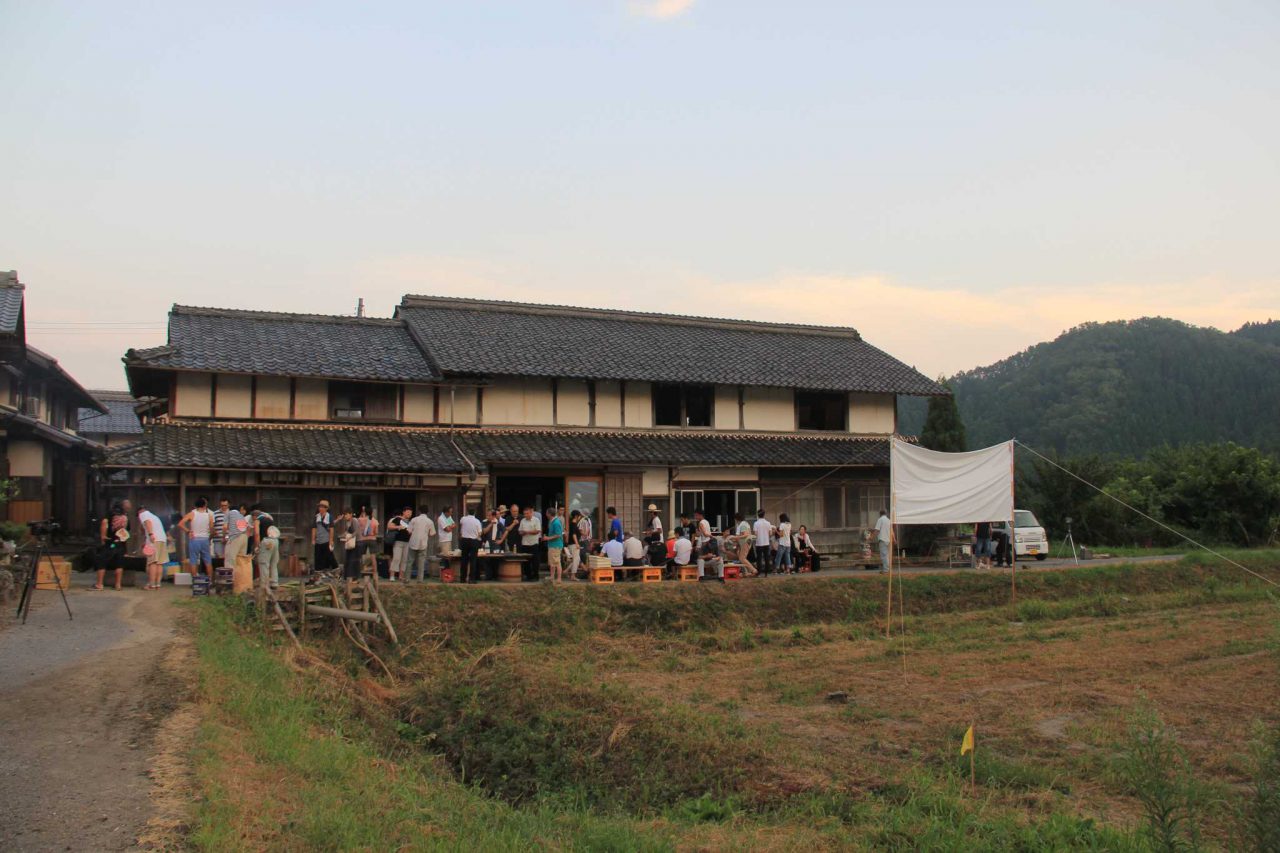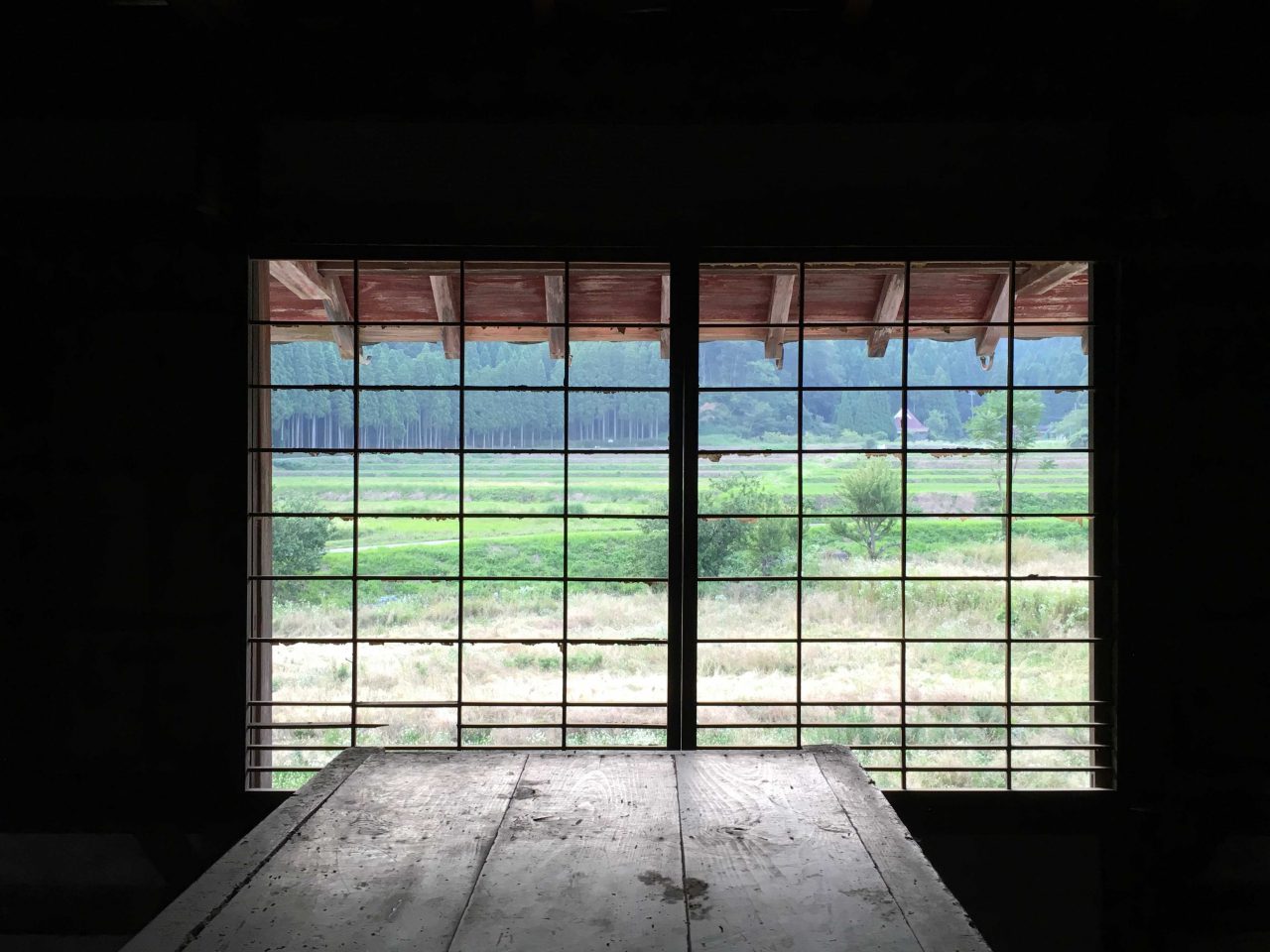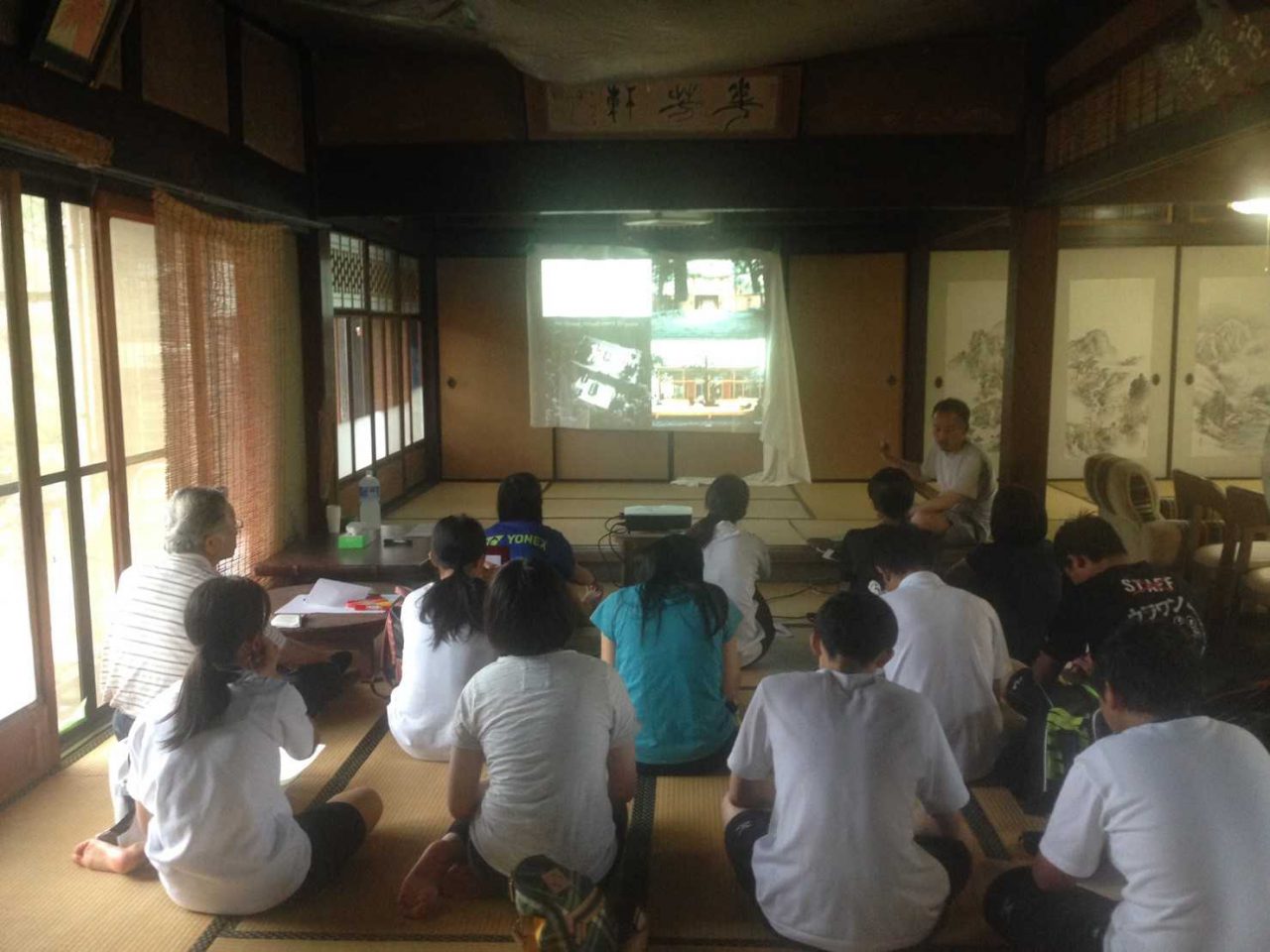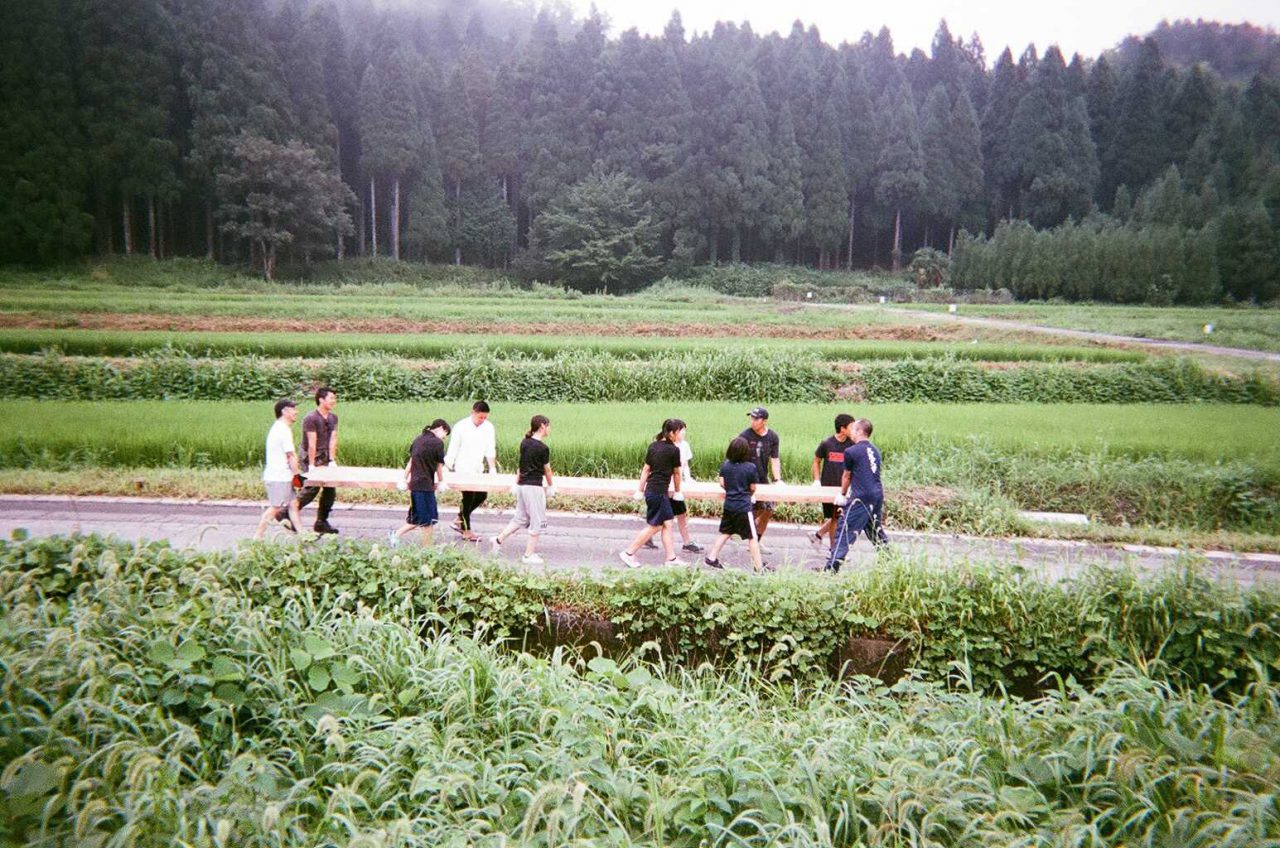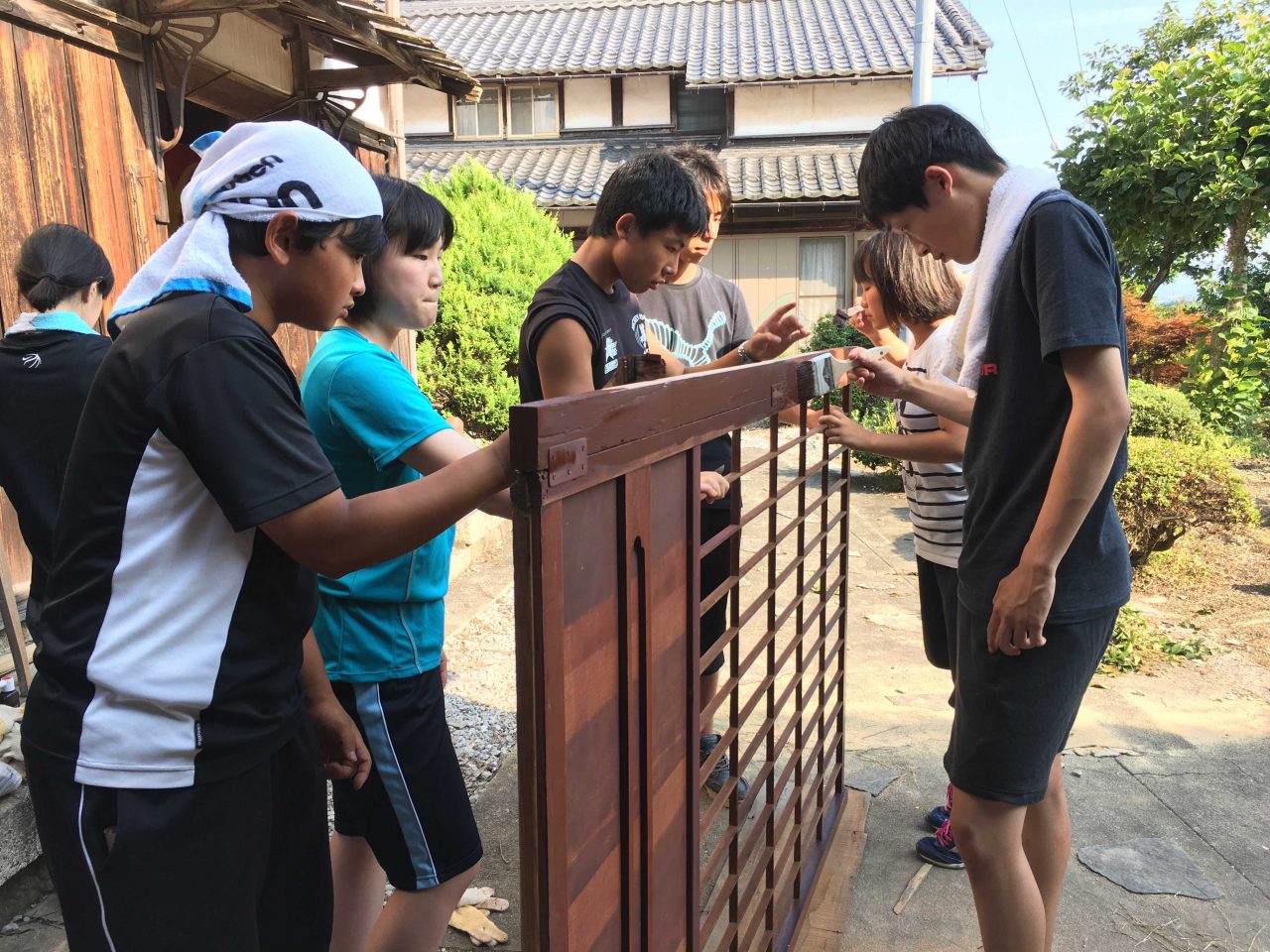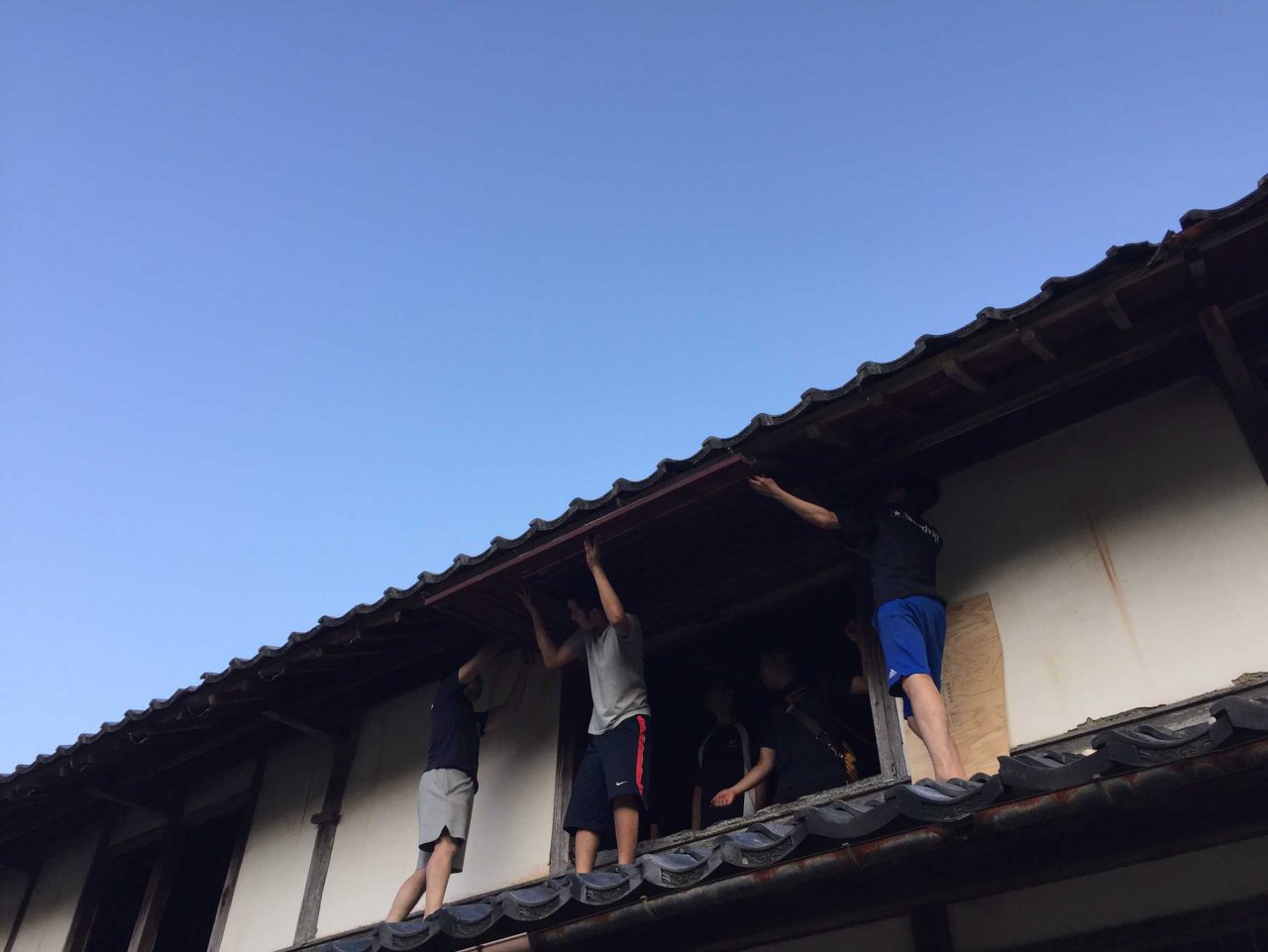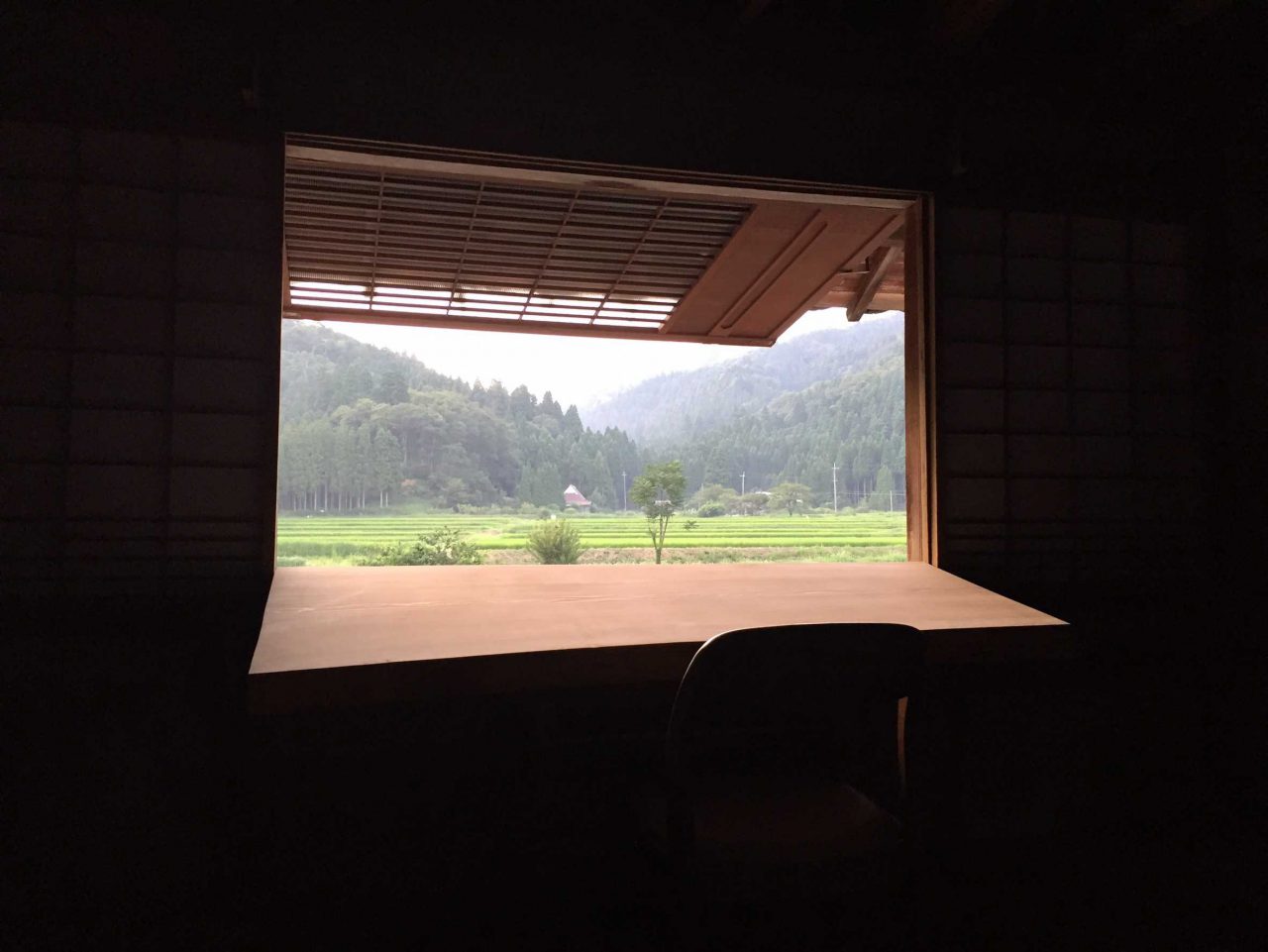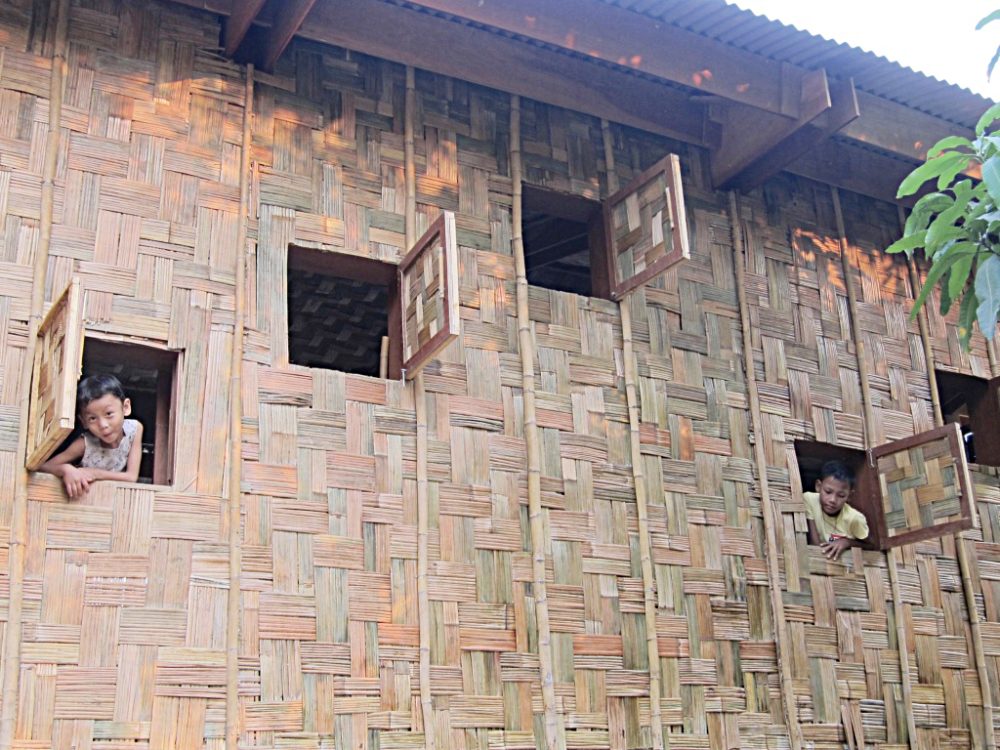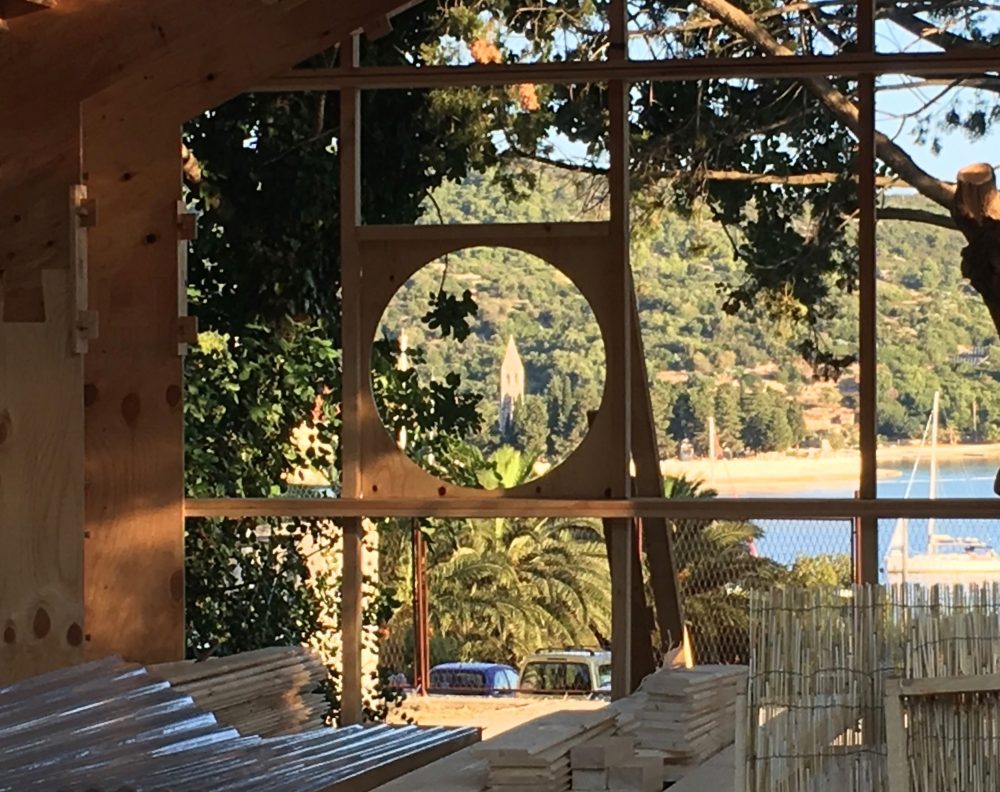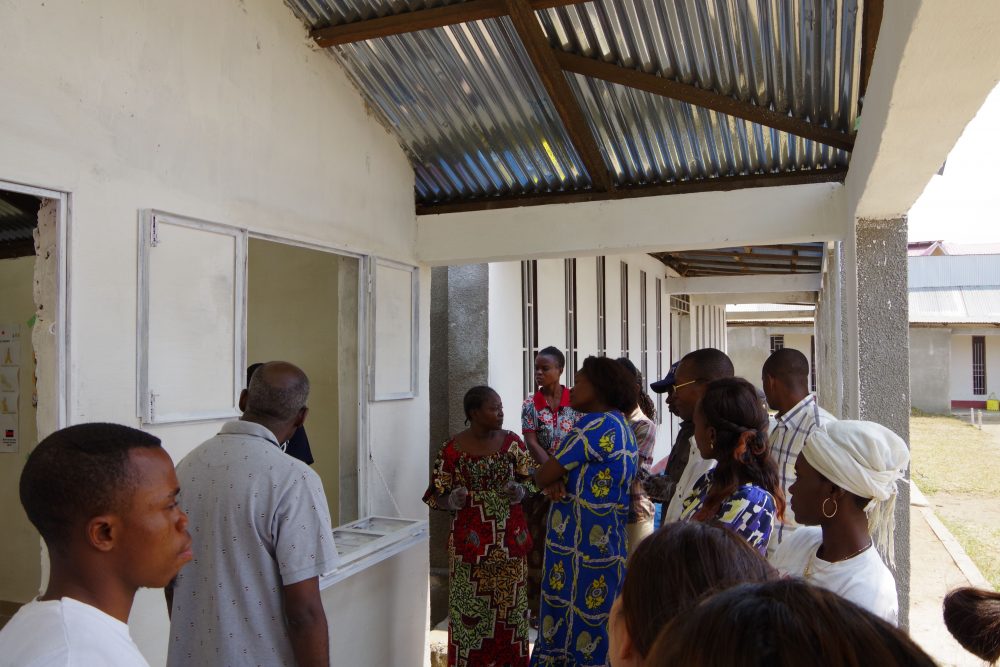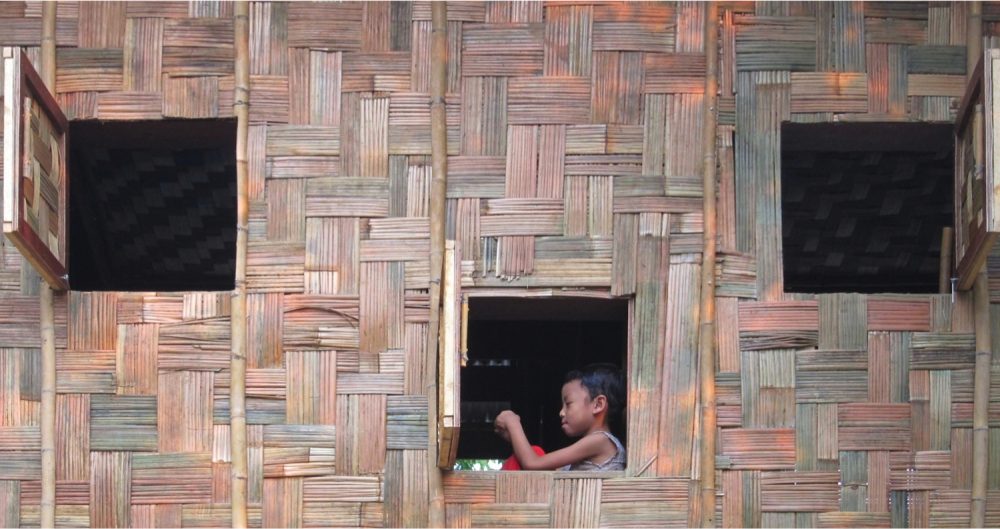
Series The Joys of Making Windows
Window Embracing the Hometown
08 Nov 2017
Part 2 of “The Joys of Making Windows”, the serial article by Hiroto Kobayashi Laboratory at Keio University SFC, introduces a project of making a window for a kominka (old folk house) in a small town of Tane, Nagahama-shi, Shiga Prefecture, implemented by a project team comprised of the laboratory members. What did we find from a 3-day window reconstruction workshop we had with local high school students and community residents?
The window on the second floor of the kominka provides a breathtaking view of Tane that both first-time visitors and long-time community residents often lose track of time and get lost in its beauty.
Tane is a town composed of 14 hamlets with a total population of approximately 2000. Located north-east of Lake Biwa, there still exist a number of minka (folk house) in traditional architectural style. The small town is blessed with abundant nature and satoyama (human-cultivated natural environment where nature and humans coexist) due to its climate appropriate for growing trees, and nostalgic images of rural Japan still remain there. The landscape is covered with vivid green rice fields from spring to summer, and the mountains transform into rich red and yellow colors in autumn. Affected by Mount Ibuki, the area receives heavy wet snow in winter. Taniguchi-cho, our project site, is located at the far end of Tane, where the 120-year old kominka (old folk house) stands tall with dignity in the middle of rice fields.
It has been 10 years since we first visited Tane and encountered the kominka at Taniguchi. This area is a typical example of depopulated rural regions in Japan, struggling with ongoing issues such as the increase of vacant houses, declining birth rate, and ageing population. In response to these issues, we implemented projects including the renovation of the kominka at Taniguchi along with other vacant minka; design and construction of a welfare facility; and development and practical application of plywood utilizing local resources as well as furniture production using the material. Exchanges and dialogues between us and the community residents continued, and eventually we started a workshop joined by local high school students three years ago. The aim of the workshop to instigate discussions on the issues including vacant houses and depopulation with the local young people and hopefully rediscovers remarkable qualities of their hometown. With such hopes in mind, we teamed up with the students of Torahime High School to make a window for the kominka in the summer of 2016.
The window is located on the north side of the second floor of the kominka. Due to deterioration of the building, shoji (paper screens) were torn; window frames were rotten; and rain shutters were broken. Except for the times when we visited Tane every several months, the space remained completely dark.
Still, the view from the window greatly fascinated everyone, including visitors from outside like ourselves, community residents, and high school students experiencing a kominka for the first time. The window frames a wonderful scenery with abundant satoyama and an expanse of green rice fields, which represent characteristics of Tane. How can we make the window open more to the community? What kind of window is needed specifically for the kominka in Tane?
What is your favorite window, and why?
What is the significance of a window? What do you see beyond it?
What kind of window is specifically needed at the kominka in Tane?
We asked the above questions to the high school students on the day before the workshop. The warmth of the sun. Flowers in the flowerbed. Each of us feels connected to something through a window. While hoping to create a connection between the community residents and their hometown, we started the first day of the workshop.
We made lumber from local Taniguchi cedar and built a desk to be placed along the windowsill. The warm touch of the locally produced lumber is an indispensable feature that makes people feel more directly connected to the scenery from the window.
An old wood door no longer used was painted with bengara (traditional paint made of red iron oxide) and transformed into shitomido (lattice shutter) against rain and wind. We devised an idea to use available materials in the house for renovation in order to recreate a special atmosphere of the kominka.
After the three-day workshop, the window was completed. The beautiful scenery of Tane is framed by the cedar desk, shitomido, and shoji on both sides. The greenery outside looks more vivid from the dim room in the kominka. In this space, viewers experience a specific atmosphere generated from kominka, and realize the richness of their hometown through the window mediating between kominka and nature.
In our view, the reconstruction of the window contributed to developing a new relationship between the community residents, the local young people, and the outsiders like us. Seen through a new “medium” or the kominka window we created, the familiar scenery of Tane gave us a special feeling toward the hometown.

